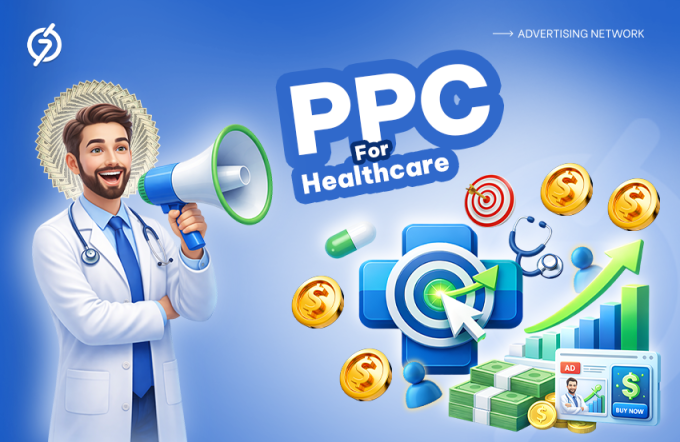Have you ever wondered how you come across those targeted ads for the new gadget you just looked at online? Well, it’s not magic, although it may seem that way sometimes. In the vast and ever-evolving landscape of digital advertising, there is a fundamental building block that is often overlooked but crucial to success: the ad tag.
Suppose you are browsing through the maze of online content, and suddenly, an ad grabs your attention. Behind that captivating display lies a complex network of code, which has been meticulously crafted to target you precisely.
Want to know more? Come along with us as we explore the world of advertisement tags, understand what they do in the digital world, and learn how to use this knowledge to navigate online ads.
What Is An Ad Tag?
An ad tag is a snippet (small piece) of code that is integrated into a website or app to display ads. It communicates with an ad network to request and deliver targeted ads based on various parameters, such as;
- User Demographics
- Browsing Behavior
- Geographic Location
Advertisement tags facilitate the seamless integration of ads into digital content, allowing advertisers to reach their desired audience effectively.
How Do Advertisement Tags Work in Digital Advertising?
Advertisement tags are essential components of digital advertising that facilitate the delivery and tracking of online ads. It is essential for you to learn how snippets of HTML or JavaScript code provided by ad servers or advertising networks are embedded within the source code of web pages or apps where ads are intended to appear. We have researched the following steps that can help you know how advertisement tags work in digital advertising;
- The publisher creates an ad unit that contains advertisement tags with the help of an advertising network or ad server.
- The advertisement tag includes ad information such as size, format, etc.
- The publisher needs to insert an advertisement tag into the website’s HTML code to display an ad on their website.
- The ad server or ad network receives the request and searches for a suitable ad to display based on information like the user’s location, interests, and browsing history.
- After the ad server or ad network chooses an ad, it is sent back to the advertisement tag and displayed on the website.
- The advertisement tag collects data and sends it back to the publisher’s ad server or advertising network, which includes ad impressions, clicks, and conversions generated by the running ad. This data is then used to measure the ad campaign’s performance and improve future advertising efforts on the website.
A Breakdown Of Ad Tag Types
The advertising technology ecosystem relies on different advertisement tags to facilitate digital advertising. Here is a breakdown of some common ad tag types;
Synchronous Ad Tags
Synchronous advertisement tags are a type of advertisement tag that displays advertisements on a webpage. They load simultaneously with the rest of the page’s content. As a result, the page cannot fully load until the ad content is loaded, too. Although these tags are easier to implement, they can considerably slow down page loading times, particularly if there are multiple tags or if the ad server is slow.
Asynchronous Ad Tags
Asynchronous advertisement tags are different from synchronous tags. Nowadays, these tags are the preferred option, and there is a reason behind that—their loading speed. Asynchronous tags load independently of the rest of the content and provide a better user experience.
Third-party Ad Tags
Third-party advertising tags are snippets of code that come from external advertising platforms or networks and are meant to be inserted into a publisher’s website.
Their main aim is to make it easier to deliver and track ads provided by third parties. Using these tags, publishers can display ads from different sources and collect data on their performance, which can be useful for analysis and optimization purposes.
What Makes Up An Ad Tag: Core Components
Advertisement Tags include various key components that play a crucial role in displaying advertisements on websites. Here is an overview of the components that are included in advertisement tags;
- Source Code– Source code is the framework of the ad tag, which is written in HTML or JavaScript. It acts as a messenger, sending signals and fetching information.
- Ad Server URL- This section of the code specifies the location of the ad server and the technology behind managing ad inventory and delivery.
- Ad Type- The ad type specifies the format of the advertisement to be displayed, including text, banner, and video ads.
- Publisher Details- This section specifies the publisher (the owner of the website or app) where the ad is being served.
- Zone- This component defines the exact location on a webpage or app where the ad will be displayed.
- Size- This specifies the dimensions of the ad. It ensures the ad fits perfectly by specifying its dimensions in the designated zone.
Common Challenges In Working With Ad Tags
Advertisement tags are essential to online advertising, but they can also cause many problems. Some of the most common challenges include;
Ad Fraud

Ad fraud is the most common issue. Ad tag loopholes can be exploited by fraudsters to generate fake clicks and impressions, causing advertisers to lose their ad budget.
Inconsistent Tag Implementation
Proper implementation of advertisement tags is crucial for their smooth functioning. Inconsistent formatting or coding errors can cause ads to malfunction or show up in the wrong places.
Difficulties In Tracking and Reporting
Tracking the performance of ad campaigns is essential, but poorly designed advertisement tags can’t be able to provide accurate data on impressions, clicks, and conversions.
Integration Issues
Websites and apps often incorporate advertisement tags from various ad networks, leading to complex and time-consuming management and integration.
Privacy Concerns
Advertisement tags must comply with stricter user privacy regulations, adding complexity to their management.
Proven Solutions To Overcome Ad Tag Challenges
Online advertising heavily relies on advertisement tags, but they may bring about various challenges, as discussed in the above section. Here are some proven solutions to handle these common issues;
Tag Management System
Utilizing a tag management system (TMS) is a wise choice to tackle advertisement tag challenges. You must research and implement a robust tag management system to simplify the process of deploying, managing, and updating advertisement tags. TMS platforms offer various features that can help minimize common tag-related issues;
- Tag Validation
- Version Control
- Tag Firing Rules
Dynamic Tag Management
You can use dynamic tag management solutions that allow real-time adjustments to advertisement tags based on user behavior, device type, geographic location, and other variables. This flexibility can optimize ad delivery and improve performance.
Regular Auditing and Monitoring
It is important to check advertisement tags for errors or outdated tags regularly. You can use various tracking tools to monitor performance and address issues proactively.
Asynchronous Loading
You must prioritize critical content and use lazy loading speed for advertisement tags to minimize page load time. You must ensure advertisement tags load asynchronously to avoid blocking resources. You can utilize tools to identify and optimize slow-loading ads.
Future Trends In Ad Tag Technology
There are various exciting changes that might be expected in ad tag technology in the upcoming years. You must keep an eye on these key trends;
Privacy-Centric Targeting and Attribution
As the focus on protecting user privacy continues to grow, advertising tags might adopt new targeting methods that do not rely on personal information. The development of new attribution models that can track ad effectiveness without compromising user privacy is crucial,
Integration With AI and Machine Learning
AI and machine learning are set to have an increasing significance in ad tag technology. The advertising platform will make use of AI to smooth the process of buying and selling ads, adjust campaign performance for the best result, and provide a good experience to the users.
Conclusion
Ad tags are a crucial element of digital advertising as they allow for targeted ad delivery based on user demographics, behavior, and location. However, challenges like ad fraud and privacy concerns still exist. Fortunately, solutions such as tag management systems and dynamic tag management offer ways to address these issues.
In this blog, we have also discussed some future trends that might be expected in ad tag technology. We hope that you understand the world of advertisement tags and how advancements in technology are shaping its future landscape.
Frequently Asked Questions (FAQs)
What is an ad tag?
Ans. An add tag is a snippet of code that is included in a website or app, usually in the form of HTML or JavaScript. It serves as a placeholder for ads, instructing the ad server to show an ad in that specific area.
What are the different types of advertisement tags?
Ans. The different types of advertisement tags include synchronous advertisement tags, asynchronous advertisement tags, and third-party advertising tags.
Is it possible to customize advertisement tags?
Ans. Yes, my friend. Advertisement tags can be customized to varying degrees depending on the ad platform and the specific type of ad tag.
How can I implement advertisement tags on my website?
Ans. You can easily implement advertisement tags by inserting a code snippet into the HTML of your website’s pages. This is usually done in the designated ad placement areas.
Can advertisement tags work on mobile devices?
Ans. Yes, advertisement tags can be implemented on mobile websites and apps to display ads to users on smartphones and tablets.


















